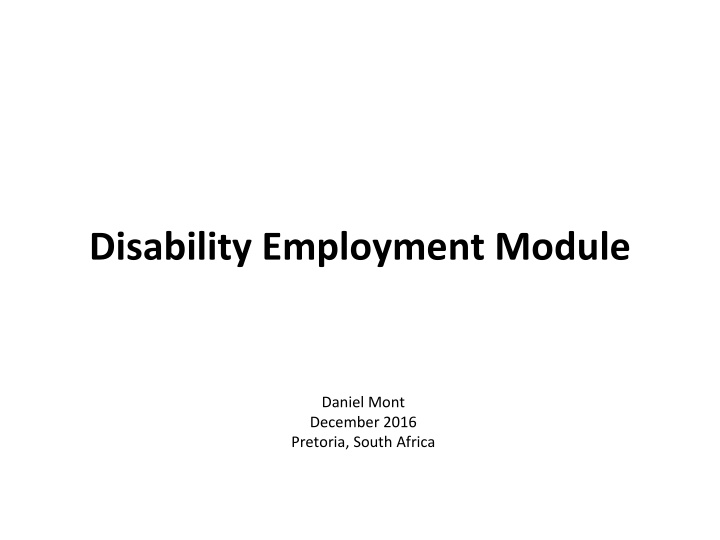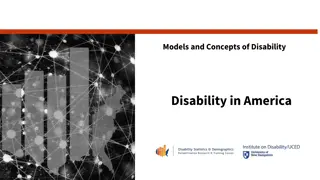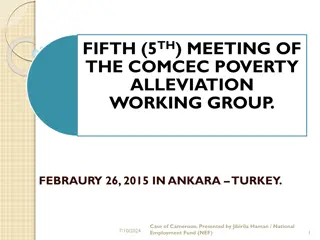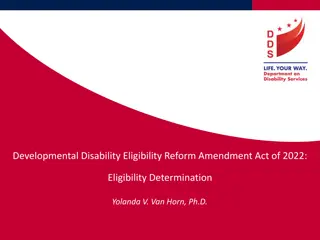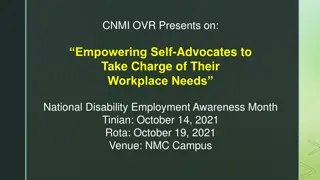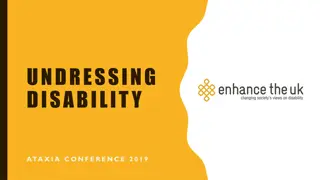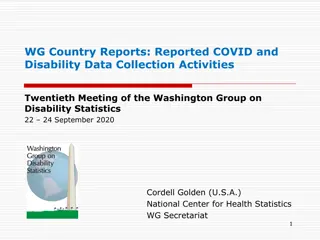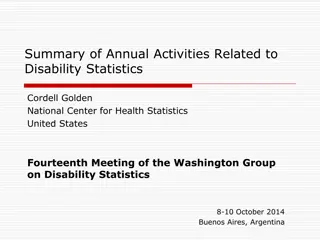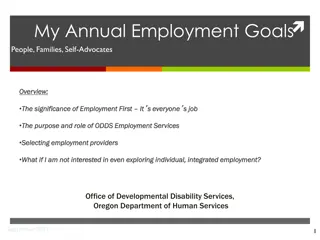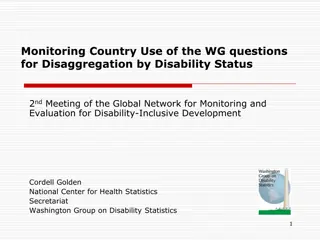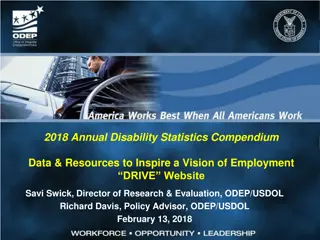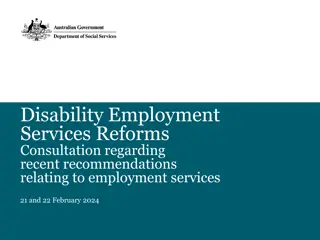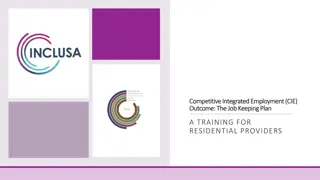Disability Employment Module
Difficulty obtaining timely, reliable, comparable statistics on labor force characteristics of people with disabilities. Lack of systematic monitoring leads to varying data quality across the world, with reported employment ratios ranging widely. Various sources and surveys contribute to this complex issue.
Download Presentation

Please find below an Image/Link to download the presentation.
The content on the website is provided AS IS for your information and personal use only. It may not be sold, licensed, or shared on other websites without obtaining consent from the author.If you encounter any issues during the download, it is possible that the publisher has removed the file from their server.
You are allowed to download the files provided on this website for personal or commercial use, subject to the condition that they are used lawfully. All files are the property of their respective owners.
The content on the website is provided AS IS for your information and personal use only. It may not be sold, licensed, or shared on other websites without obtaining consent from the author.
E N D
Presentation Transcript
Disability Employment Module Daniel Mont December 2016 Pretoria, South Africa
Overall picture S t a t i s t i c s Difficult to get timely, reliable, comparable statistics on labour force characteristics of people with disabilities The quality and quantity of data available varies enormously across the world Disability is not systematically monitored (variable covered but not processed against labour force characteristics) Variety of sources (varying degree of limitations) Censuses Household surveys and specialized disability surveys Various types of administrative data Establishment surveys Different classifications, concepts, definitions and questionnaires Different indicators Reported employment-to-population ratios vary from less than 10% to more than 60% Department of Statistics International Labour Office
S t a t i s t i c s Type of sources (118 countries) countries) Periodicity of data collection (118 International Labour Office Department of Statistics
S t a t i s t i c s International Labour Office Department of Statistics
Questions used to identify persons with disabilities S t a t i s t i c s Direct questions related to impairment/body functioning (but also registered work related disability) The respondent is directly asked if she/he is disabled, or The respondent is asked if she/he has physical impairment; visual impairment; deafness/hearing impairment; muteness/severe speech problem; deaf-mute; permanent disfigurement; psychiatric and intellectual disability; multiple disability; paralyzed; Questions related to difficulties people face while performing daily activities The respondent is asked if she/has difficulties in performing activities of daily living such as seeing, hearing, speaking, remembering, concentrating or communicating, mobility difficulties, etc. Questions related to limitations/participation in the labour market (kind and amount of work they can do) International Labour Office Department of Statistics
Overall picture S t a t i s t i c s Difficult to get timely, reliable, comparable statistics on labour force characteristics of people with disabilities The quality and quantity of data available varies enormously across the world Disability is not systematically monitored (variable covered but not processed against labour force characteristics) Variety of sources (varying degree of limitations) Censuses Household surveys and specialized disability surveys Various types of administrative data Establishment surveys Different classifications, concepts, definitions and questionnaires Different indicators Reported employment-to-population ratios vary from less than 10% to more than 60% Department of Statistics International Labour Office
Purpose of Disability Labor Force Module Disaggregation of standard labor force indicators Labor force participation Unemployment Employment Type of Employment Specific indicators for people with disabilities
Placement in Labor Force Survey Standard demographic data Disability identification questions Standard employment indicators If the person has a disability: Special set of questions on barriers and the nature of their work Questions on attitudes towards disability and employment
Disability Identification Abbreviated version of Extended Set Core six questions (with skips for glasses and hearing aids) Additional question on upper body Questions on anxiety and depression
Categories of disability questions related to employment Barriers Accommodations Social Protection Attitudes (asked of all people)
Barriers For all PWD who are inactive (not employed and not looking for work) EW_1a Which of the following, if any, would make it more likely for [you/him/her] to seek employment. Check all that apply. Training to qualify for available jobs Transportation from my home to available jobs Help in locating available jobs Greater belief that someone will hire me Assistive devices or technology to help me do the job A work place that accommodates people with disabilities Other: Please specify _________________
ATT_3 How supportive would [your/his/her] family members be if you decide to work? Very supportive Somewhat supportive Not supportive
Accommodations For PWD who are employed WA_1 Has [your/his/her] workplace been set up in a way to account for difficulties you have in doing certain activities? Yes (go to WA_1a) No (go to WA_1b)
WA_1a Would more modifications be needed? WA_1b Would you need any modification? Yes No
WA_2 Is [your/his/her] work schedule arranged to account for difficulties you have in doing certain activities? Yes (go to WA_2a) No (go to WA_2b)
WA_2a Would you need any other arrangement of your work schedule? WA_2b Would you need your work schedule to be changed? Yes No
WA_3 Are [your/his/her] work tasks arranged to account for difficulties you have in doing certain activities? Yes (go to WA_3a) No (go to WA_3b)
WA_3a Would you need any other arrangement of your tasks? WA_3b Would you need your tasks to be changed? Yes No
Social Protection For PWD that are employed SP_1 Do you receive any cash benefits from the government linked to your disability? SP_1a Do you know if the amount of the benefit will change if your salary increases? Yes No
For PWD unemployed or inactive SP_2 Do you receive any cash benefits from the government linked to your disability? Yes No SP_2a Will you keep the benefit if you find a paid job? Yes Yes, but the amount will decrease No
Attitudes ATT_1 How willing are employers to hire people with disabilities? ATT_2 How willing are people to work alongside people with disabilities? Unwilling Somewhat willing Very willing
Cognitive Testing First round done at NCHS in United States, with subsequent revisions Second round at NCHS happening soon Need to roll out cognitive testing to more countries, possibly starting with India
